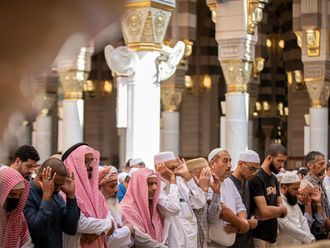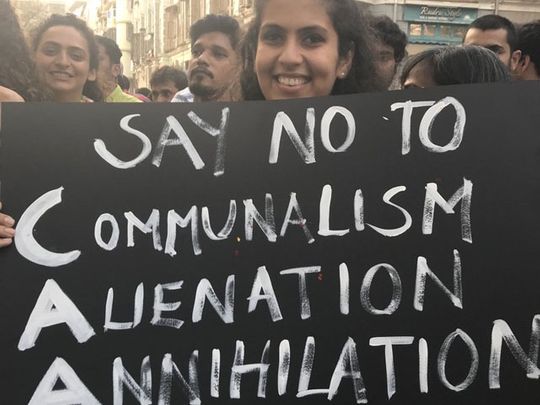
Highlights
- Since Narendra Modi became the Prime Minister of India in 2014, India’s minorities, particularly its 200 million Muslims not only have been subjected to blatant discrimination but also various forms of mob violence.
- The lynching of Muslims on suspicion of eating beef or smuggling cows has become quite regular. Muslim youths have been harassed by the police and ruling party cadres even for talking to Hindu girls.
Protests against the Narendra Modi government’s Citizenship Amendment Act (CAA) have engulfed India. It started in and around Delhi on 12 December 2019 and since then it has been fast spreading. Largely these protests have been peaceful, but in some places, have turned violent and several protesters have been killed or injured in states like Uttar Pradesh, Karnataka, Delhi, and Gujarat. Muslims are leading this opposition on the streets and almost everywhere they are being supported by students, civil society groups and even political parties. The intensity of the protests has surprised everyone, including Modi and his Minister of Home Affairs, Amit Shah. Whatever might be the outcome of it, one thing for sure that this protest has shown the world that India still has the willingness and ability to fight against majoritarian authoritarianism to protect its democracy and secular values.
While amending the Citizenship Act, the Modi regime had anticipated some protests in the North East, particularly in the state of Assam as it would mostly negate their perceived gains from the National Register of Citizens (NRC). To placate the opposition, the regime had tactically excluded tribal areas of the North East from the ambit of the CAA and had made some deal with local political parties. However, these precautions have not stopped the protest taking momentum in Assam, even before the Bill was passed by the Parliament. While Assamese Hindus are leading the protest, Sikhs, Marwaris, Biharis, and Muslims are supporting them as the protest is against the perceived further influx of Bangladeshi Hindus to their state. Protests in Assam by Assamese Hindus is not surprising, what is surprising is the spirited protest waged by Indian Muslims in the mainland.
Muslims targetted
Since Narendra Modi became the Prime Minister of India in 2014, India’s minorities, particularly its 200 million Muslims not only have been subjected to blatant discrimination but also various forms of mob violence. The lynching of Muslims on suspicion of eating beef or smuggling cows has become quite regular. Muslim youths have been harassed by the police and ruling party cadres even for talking to Hindu girls. Names of cities and streets have been changed and world treasures like the Taj Mahal and Red Fort have also been targeted because of their Islamic roots. However, the discrimination of Muslims became overt and institutionalized after Narendra Modi won the election again in May 2019 with a larger mandate and made his Man Friday Amit Shah the Minister of Home Affairs.
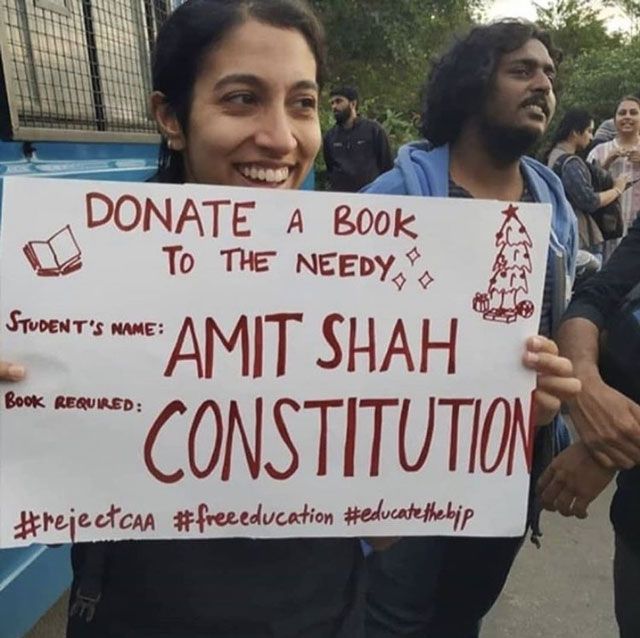
Modi-Shah duo, without taking into consideration of rights and sensibilities of minority Muslims, passed the very controversial Muslim Women (Protection of Rights on Marriage) Act, 2019, which criminalizes Muslim men merely saying ‘triple talaq’ to divorce their wives. The Jammu and Kashmir Reorganization Act, 2019 was also done in a manner, which was not only provocative for Kashmiri Muslims but Muslims of India in general. Over and above, in November 2019, when India’s Supreme Court decided to give the land of illegally demolished Babri Mosque site in Ayodhya to build a Ram Temple, it took away the hope of Muslims from the judiciary as well. India’s Muslims have been marginalized economically since independence, their hope in the Indian political system faded with Modi coming to power in 2014, and the last optimism, which was judiciary evaporated with disappointing Ayodhya verdict.
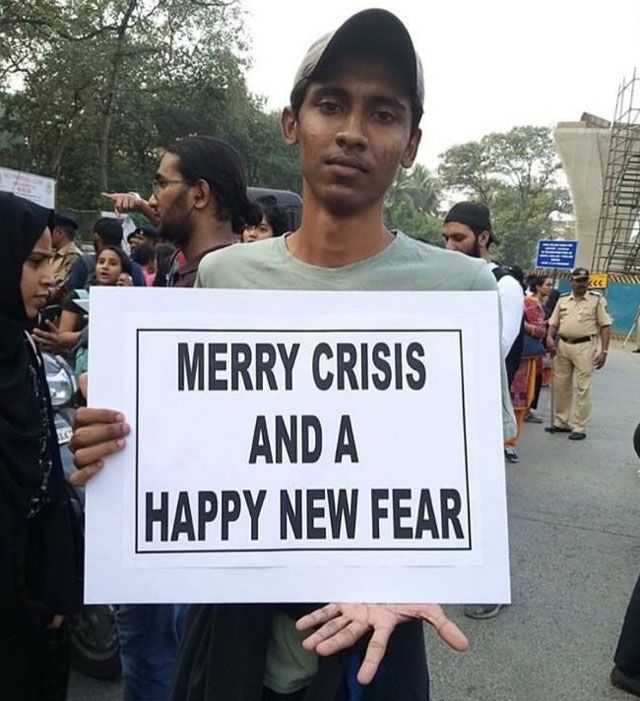
In spite of being frequently targeted by the majoritarian mob, invariably questioned about their loyalty to India and repeatedly failed by the political and judicial institutions of the country, Muslims continued to hope for good sense to prevail and stayed away from confronting the regime. Whenever they protested, it was mostly symbolic, short duration and confined to a limited area. Their tolerance and accommodation neither stopped the Modi regime to curb its majoritarian onslaught nor was able to wake up moderate Hindus from their slumbers to retrieve the idea of India. The accumulating grievances and anger of India’s Muslim minority finally reached a ripe moment to explode into an unprecedented street protest with the passing of CAA. They see the exclusion of Muslims from the ambit of the Act, which aims to give citizenship to people fleeing from Afghanistan, Bangladesh, and Pakistan as against the spirit of India’s secular constitution. However their real fear is, with this Act, they also see through the Modi government’s plan to make a large number of Muslims as stateless through the planned NRC for the rest of India.
Though the movement started in some academic campuses in and around Delhi, it has now spread to small towns and villages in India. Modi-Shah and the rest government machinery have been surprised the manner it started and spread. No political party or its machinery planned it nor leading it. Primarily Muslim students started the protest and others joined in and it has taken the shape of a mass movement. Surprisingly a large number of female students are at the forefront of this rapidly unfolding protests against Modi’s authoritarian regime. Civil society organizations and activists have come forward. Organizations representing Dalits and Christians have been taking part in the protest.
Parties join protests
Fortunately, unlike on other issues like triple talaq, or Kashmir or Ayodhya, opposition parties are not hesitating to criticize the CAA. This has been possible for two reasons. Firstly, as Hindus in large numbers in Assam protesting, it has become difficult for the regime to frame the issue in its usual Hindu-Muslim binary. Secondly, as Muslims have started the protest, opposition parties by supporting it can’t be criticized for instigating the minority group to fight against the country. Due to this conducive environment, the protest has not only got the support of state-based political parties like TMC, RJD, SP, DMK and Left Parties but also of usually languid main opposition party Congress.
Protest reflects the key aspect of the relationship between the country and society. The type of government sharply affects the nature of the protest. Unlike an authoritarian regime, the structure and ethos of democracy are such that they are adjusted to respond to limited challengers in a conciliatory way, which reinforces the utility of peaceful protest over violent protests. Being India a federal country, the approach of the state police towards the protest, however, has been varied depending upon which party ruling that state. As BJP ruled states like Uttar Pradesh, Karnataka, Gujarat and also Delhi are relying more on authoritarian style coercive control, that has increased the incidence of protests turning violent and several protesters being killed.
Even though every protest has its own history and perpetuity, the timing of its collapse defines its quality. For a broader and successful protest in a democratic setup, there is a need for larger and sustained popular mobilization. Violence is a high-risk option as it often brings backlash from the regime. Some success may come but at a high cost.
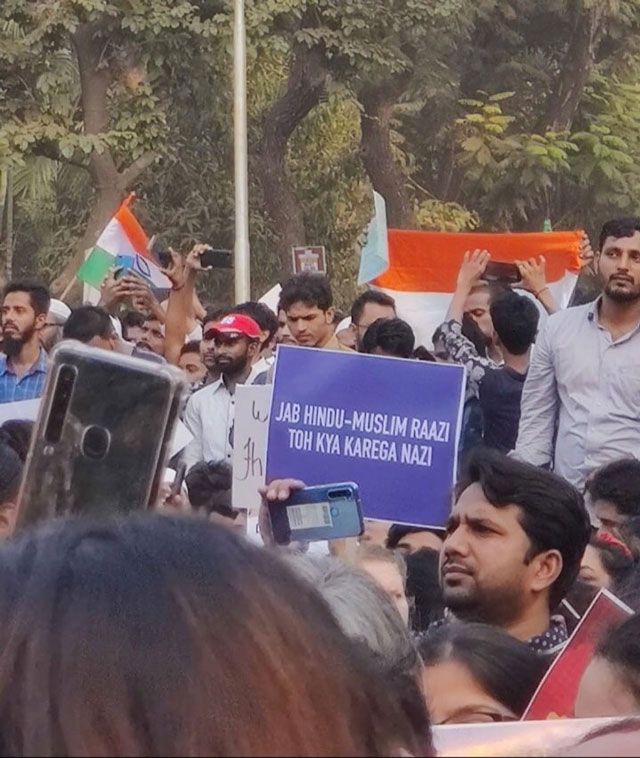
Thus, particularly in a large and segmented country like India, the size and spread of protest matter more. The diffusion of the protest is necessary in order to keep it alive when its initial spark begins to sputter. So, protest against the CAA needs to transcend the present “volcanic” stage of its collective action. It has to draw support from as many social, cultural and activist networks possible as well as from the opposition political parties to spread further and be sustained. Time will tell whether this first protest of a serious nature in India after Modi came to power in 2014 will be successful in forcing the regime to withdraw the ‘unconstitutional’ CAA and stop implementing NRC in the rest of India or not. Success in achieving these demands needs the Modi regime to act democratic and be responsive. However, the emergence and wide support for this increasingly powerful protest against the Modi regime have started to revive the hope for the survival of a secular democracy for the time being.
Ashok Swain is a professor of peace and conflict research at Uppsala University, Sweden, and author of the book, Struggle against the State: Social Network and Protest Mobilization in India.






